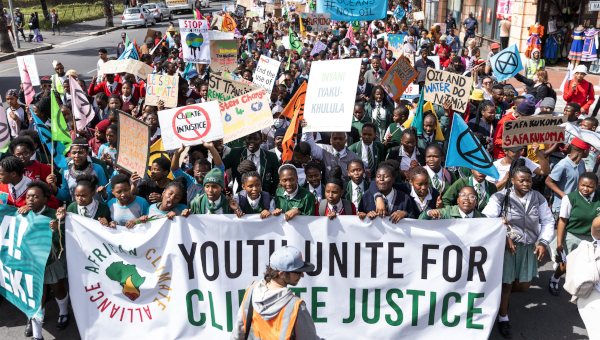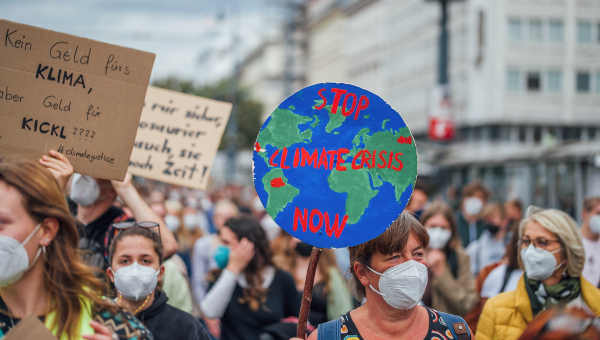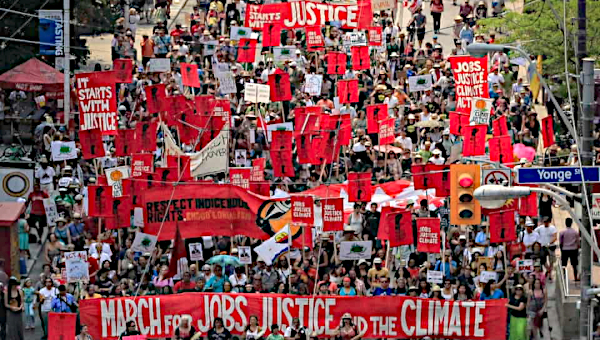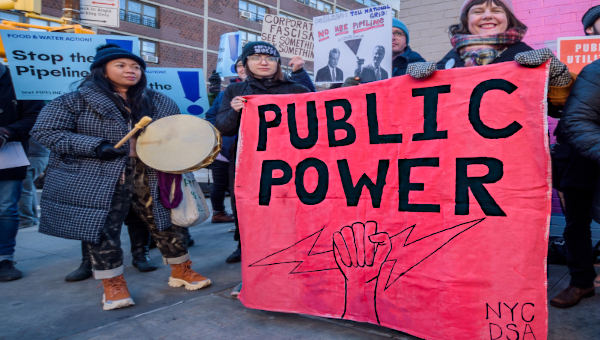Do We Pull the Monster Down?
William Carroll, Department of Sociology, University of Victoria (wcarroll@uvic.ca) — September 19, 2010. Lyrics Everybody’s making plans to move to higher ground There’s panic in the marketplace yet no one … Watch video »
William Carroll, Department of Sociology, University of Victoria (wcarroll@uvic.ca) — September 19, 2010.
Lyrics
Everybody’s making plans to move to higher ground
There’s panic in the marketplace yet no one hears a sound
Programmed trading, frictionless, insentient impounds
The dreams of the unchosen ones – their faint hopes hammered down
Inner cities crumble as they sink into the sea
In northern Ethiopia human life becomes debris
The wretched reap the whirlwind but one thing’s guaranteed:
The Palm Springs grass stays evergreen by municipal decree.
In a world where power and violence gladly shake each other’s hands
Can we keep our own hand steady; can we take a rebel’s stand?
The landscape now lies littered with logos for every taste
At shrines of mass consumption the elect purchase their grace
As TV pumps its product we’re on automatic drive
Voyeurs stoned on soma living other people’s lives
In a corporate laboratory they’re creating virgin life,
Enclosing it as property, from seeds to Harvard Mice®
When the last stand has been clear-cut and the ocean floor swept clean,
After commerce conquers nature will our ghosts haunt the machine?
In a world so deeply wounded can we nurse it back to health?
Take our minds back from the TV screens, take our hearts off of the shelf?
There’s a madman in the White House waging terroristic war
No one can recall what all the flag-waving is for
Zero tolerance in school yards while the gunships hunt their prey
Another Palestinian got mowed down yesterday
Our shirts are stitched in sweatshops, our chocolate farmed by slaves,
Persian carpet weavers work their 18 hour days.
Child prostitutes in Bangkok send their meager wages home
The sex tourists consume them leaving little but the bones.
In a world of such monstrosity there’s no place safe and sound
Do we let the carnage happen, or do we pull the monster down?
And I wonder what the future holds for you my second son
And all the others coming forward in a century so young
Will the wishes of the age be dashed and scattered as before?
Can the Earth survive another round of greed and senseless gore?
In a world of such monstrosity there’s no place safe and sound
Do we let the carnage happen, or do we pull the monster down?
12 March 2004
“Do we pull the monster down?” is a music video I produced in May 2004, based on a song I wrote that March. Consisting almost entirely of still images gleaned from the internet, it comments on some of the salient contradictions of the post-9/11 conjuncture, one year into the U.S. invasion of Iraq. The montage was constructed with some inspiration from Sergei Eisenstein‘s film theory; hence there is a good deal of dialectical “collision” in the flow of images (Eisenstein himself is acknowledged with a still from his film October, at 3:41). The analysis that organizes this work is intersectional: it tries to connect the dots between interdependent forms of power based in class, gender, imperialism, militarism, race and nation, while emphasizing throughout the looming ecological crisis. This piece was written particularly for my son Wes, whose photo (at age 11) appears at 3:29; however, its closing images encourage the general idea of youth as a potential force for change. “Do we pull the monster down?” does not offer solutions to the predicament it depicts, but gestures in its title and conclusion to the choice Rosa Luxemburg posed between socialism and barbarism.
As with my other music video, “So Said Tony Hayward,” I think of this production as a socio-poetic initiative in public sociology: advancing an accessible analysis within an artistic medium as a way of provoking reflection and discussion. I hope activists and educators will continue to find it useful in classrooms, meetings and other contexts, despite its gradually becoming somewhat of a historical document.
For a discussion of Sergei Eisenstein’s film theory and films see Dan Shaw (2004) ‘Sergei Eisenstein,’ Senses of cinema. Alison Symington (2004) offers a good introduction to intersectionality in “Intersectionality: a tool for gender and economic justice,” Association for Women’s Rights in Development. On the choice between socialism and barbarism, see
Ian Angus (2008) “If socialism fails: the spectre of 21st century barbarism,” Socialist Voice 27 July, and Michael A. Lebowitz (2010) “The spectre of barbarism and its alternative,” Bullet 10 September.





